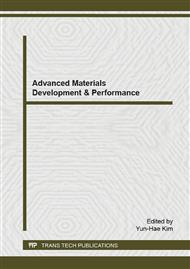p.231
p.235
p.241
p.249
p.253
p.259
p.263
p.267
p.271
Effects of Specimen Size and Temperature Condition on Compressive Fracture Behavior for ATJ Graphite
Abstract:
The rocket nozzle throat is exposed to combustion gas of a high temperature. Therefore, it is important to select suitable material for the nozzle which can maintain its structural integrity at a high temperature and to evaluate the material for proper rocket nozzle design. ATJ graphite, as the candidate material for rocket nozzle throat, is studied. In this study, an experimental method to evaluate compressive fracture behavior of ATJ graphite is presented. In particular, the effects of specimen size, temperature and heating time on compressive strength were investigated. Three types of specimens were used in uniaxial tests at room temperature, where the ratios of diameter to length are 1/2 of ASTM standard specimen, one of type I specimen and 1/0.8 of type II, respectively. Also, two kinds of specimen, which were coated using antioxidant and non-coated respectively were tested at elevated temperature to investigate temperature dependency of compressive strength.
Info:
Periodical:
Pages:
253-258
Citation:
Online since:
June 2015
Authors:
Price:
Сopyright:
© 2015 Trans Tech Publications Ltd. All Rights Reserved
Share:
Citation:


